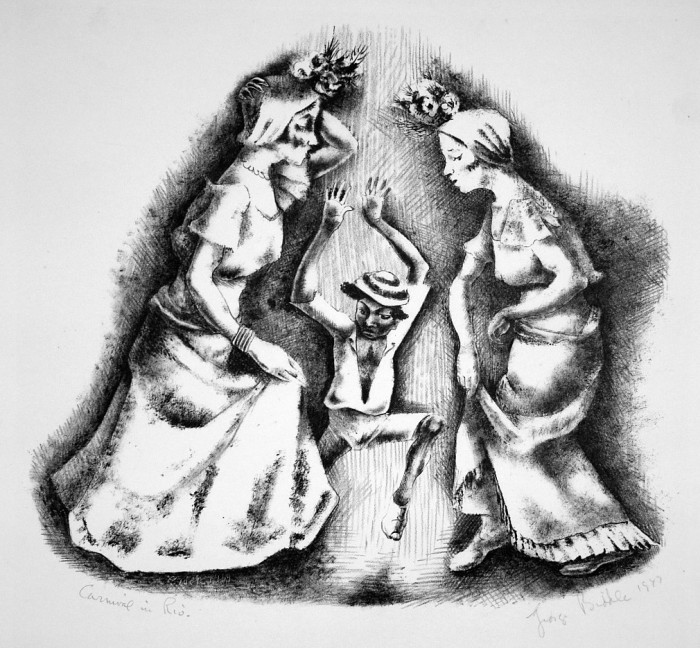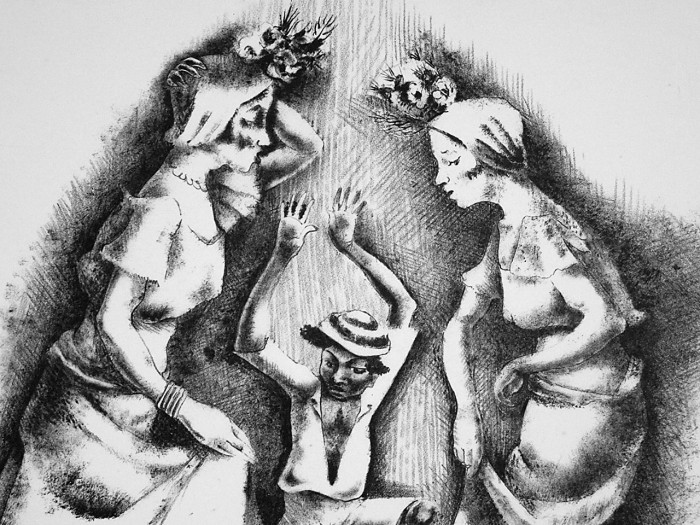Carnival in Rio No. 4

George Biddle (1885-1973), Carnival in Rio No. 4, lithograph, 1947, signed and dated in pencil lower right; titled lower left [also signed and dated in the stone lower left]. Reference: Pennigar 151, only state, from the edition of 20. In good condition, with margins (remains of prior hinging verso), 10 1/2 x 11 1/4, the sheet 11 3/4 x 16 inches, not matted.
Biddle signs and dates the print “Biddle 1944” in the stone in barely visible scratches just above the pencil title. This dating would presumably change Pennigar’s dating of the print from 1947 to 1944. Also, it might change the title of the print; perhaps this should be Carnival in Rio No. 1 (currently the title for Pennigar 141, dated to 1944) or Carnival in Rio No. 2. Still, Biddle dated the print in pencil 1947 – could this be the date he signed it, a couple of years after it was printed?
A very good impression, printed in black on wove paper.
After Groton, Harvard College and Harvard Law (and several breakdowns) Biddle decided that a conventional career in law was not for him; he decided on art, went to Paris, worked with Mary Cassatt and familiarized himself with modernist currents in art (as well as more traditional European art).
After serving in WWI, and the dissolution of his marriage, he became interested in working outside of the European tradition (although his travels continued to include Europe, and he spent a period working under the influence of Jules Pascin in Paris in the mid-20’s).
Carnival in Rio seems to reflect Pascin’s influence, particularly in the modernistic flattening of the perspective, and also in the exacting lithographic lines more characteristic of drypoint (a favorite medium for Pascin) than lithography. Indeed, the black areas of the print have the character of drypoint burr.
This print along with several other Rio subjects was based on sketches Biddle made while in Rio de Janeiro in 1942 executing a mural.

Detail